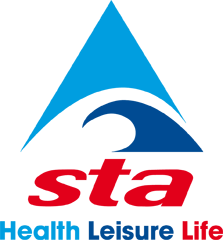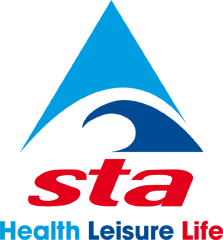Developed in conjunction with MOR Solutions
Due to the increasing popularity of tablets being used on poolside during swimming lessons, STA recognises the benefits these have for swim schools and swimming teachers. However, STA also recognises the importance of learner’s safety and data protection requirements.
There are three main areas for consideration when using tablets on poolside:
- Safety
- Data Protection
- Tablet Functionality
Safety
- At no point should the tablet distract a swimming teacher from the delivery of the lesson or its safety. The tablet should be used at the start of the lesson, before the learners enter the pool. It should then be placed to one side out of the way.
- When updating a learner’s progress or assessment, a swimming teacher should do this after the lesson has finished. The learner’s safety should never be compromised whilst they are in the care of the swimming teacher.
- Swimming teachers must not leave learners unattended when using a tablet.
- The use of a tablet to record learner attendance should take no longer than it would to tick a paper register.
Data Protection
- All swimming teachers who use a tablet should sign and understand the swim school’s data protection policy.
- A swimming teacher should only be able to access the class information such as learner name, medical details etc. They should not have access to non-essential personal data such as address, bank details etc.
- When the tablet is being used during a swimming lesson, the tablet must be locked or have a security feature which will not allow another individual to access the information.
- At no point should a personal tablet be used for work purposes. The employer should provide these if they are to be implemented into the swimming lesson programme.
- Employers and venues should have appropriate safety precautions in place ensuring the network/Wi-Fi are secure and cannot be compromised.
- All tablets should be installed with antivirus and firewalls with the most up to date software where practicable.
Tablet Functionality
- Tablets which have a built-in camera must have the camera feature disabled and blanked off, unless it is being used to provide visual feedback to the learner. This can be done by taping over the lens.
- If a tablet is being used to record a learner’s progress or to give visual feedback, informed consent must be given from the parent/guardian and assent* from the learner. If the parent/guardian gives consent but the learner says no, then the learner’s wishes must be observed, even if the learner is under 16 years old.
- If consent and assent has been obtained and the tablet is being used for a specific stroke analysis element or practice, then the image/recording must be deleted immediately once feedback has been given. No imagery/footage is to be stored or kept on the tablet.
- All tablets used in a poolside environment must be in a secure waterproof housing to protect against water damage and to prevent any glass getting in/on the poolside, should the tablet be dropped.
- Tablets should not be used in changing facilities.
- When charging a tablet this must be done away from poolside in a secure area following the Electricity at Work Act 1989 which covers the safe use of electricity at work. This has particular relevance when working in a pool environment.
* Consent is given by someone who fully understands why the photos and videos are being taken and what will happen afterwards. A signed consent form is recommended. A learner under 16 cannot give consent however they should be asked if they want to partake in the activities and if they would like to be photographed or filmed; this is known as assent. Assent is not a one-off process, it is continuous. Learners must give assent every time. Assent can be given in the form of a verbal yes or nodding the head.
This policy should support a swim school’s individual policies and procedures. The swim school should have suitable risk assessments in place for the use of the tablets on poolside and written permission from pool management.
Training should be given to all staff and this training should be recorded in training records.

